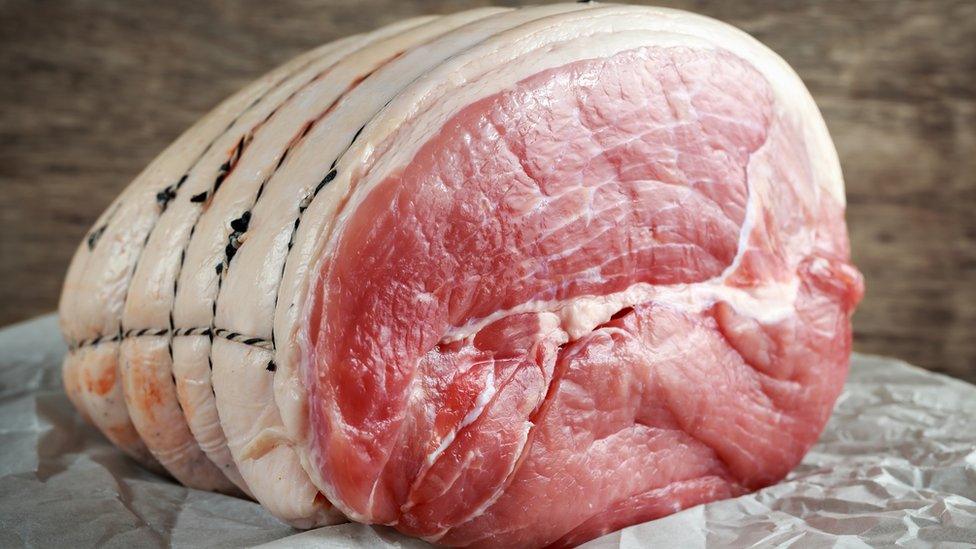Why your social media is covered in gammon
- Published

Social media is an often-overwhelming swirl of opposing opinions and arguments.
However, certain phrases periodically cut through the noise and enter into the online vocabulary.
Perhaps surprisingly, "gammon" has become a popular term on social media to describe the rosy complexion of outraged middle-aged people in the UK.
Twitter user Tattooed Mummy shared two definitions of the term.
Allow Twitter content?
This article contains content provided by Twitter. We ask for your permission before anything is loaded, as they may be using cookies and other technologies. You may want to read and before accepting. To view this content choose ÔÇśaccept and continueÔÇÖ.
The term has grown since the Brexit referendum and 2017 general election, and has been seen by some as a response by the left to the term "snowflake" to describe easily offended liberal millennials.
The gammon-snowflake clash seems to map the divisions between younger Remain voters and older people who supported Brexit.
The pork-based insult has gained renewed prominence after reported some were saying it was a racial slur used by those supporting Labour leader Jeremy Corbyn to attack middle-aged men.
"Gammon" has been tweeted over 40,000 times in the past 24 hours.
Where did it come from?
The term was first used as an insult by viewers of the 91╚╚▒Č's Question Time programme in 2016.
Allow Twitter content?
This article contains content provided by Twitter. We ask for your permission before anything is loaded, as they may be using cookies and other technologies. You may want to read and before accepting. To view this content choose ÔÇśaccept and continueÔÇÖ.
However, "gammon" gained popularity after a collage of contributors to Question Time - each middle-aged, white and male - was shared along with the phrase "Great Wall of Gammon" in 2017.
Since then, the term has often been used in online discussion as a
Is it racist?
DUP MP Emma Little Pengelly tweeted she was "appalled" by the term, which she suggests is "based on skin colour and age".
Allow Twitter content?
This article contains content provided by Twitter. We ask for your permission before anything is loaded, as they may be using cookies and other technologies. You may want to read and before accepting. To view this content choose ÔÇśaccept and continueÔÇÖ.
However, journalist Adam Bienkov wrote that there was no "disadvantage to being an angry old man with pink cheeks".
Allow Twitter content?
This article contains content provided by Twitter. We ask for your permission before anything is loaded, as they may be using cookies and other technologies. You may want to read and before accepting. To view this content choose ÔÇśaccept and continueÔÇÖ.
Many others online drew a comparison between those offended by the term "gammon", and their derision of "snowflakes" as easily offended.
Twitter user Michael Scanlan set out his view of the "#gammonparadox".
Allow Twitter content?
This article contains content provided by Twitter. We ask for your permission before anything is loaded, as they may be using cookies and other technologies. You may want to read and before accepting. To view this content choose ÔÇśaccept and continueÔÇÖ.
Noting the recent accusations of racism, artist Doc Hackenbush shared two "gammon"-inspired illustrations, saying: "I guess these are racist now."
Allow Twitter content?
This article contains content provided by Twitter. We ask for your permission before anything is loaded, as they may be using cookies and other technologies. You may want to read and before accepting. To view this content choose ÔÇśaccept and continueÔÇÖ.
You may also like: